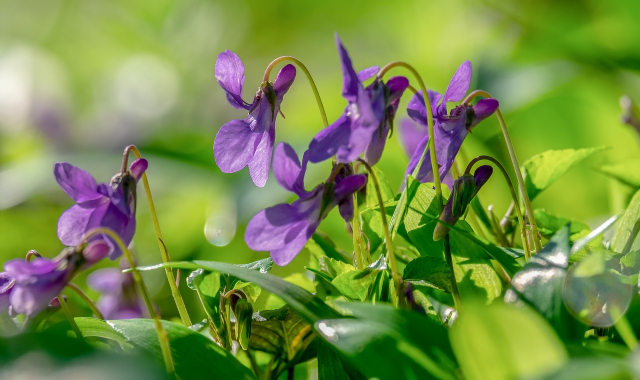For many of us the winter of 2013/2014 will be remembered for decades to come. Between ice storms, record breaking snow falls, floods, and temperatures that were so cold they shattered records it was memorable to say the least.
As the temperatures start to warm up the thought of harvesting spring wild edibles are at the forefront of many people’s thoughts.
Why Eat Spring Wild Edibles?
The Greek physician Galen (Claudius Galenus, 130 AD – 200 AD) and many other notable physicians after him commonly believed the blood became stagnant after a cold winter, and that the long winter months affected one’s temperament and triggered melancholy.
How do we effectively cleanse our blood? It’s really very simple; it’s been done for centuries in many countries – eat fresh, spring, wild greens.
Yes the fresh greens for the most part are bitter, but that’s the whole point. They improve digestion more than any store bought greens and this is the whole essence behind purifying our blood. I was once told by a Native elder that their belief system claimed that the blood is not dirty. It’s our liver and the lymphatic system that accumulate toxins from processing rich, heavy foods during the long, cold, winter months; eating fresh bitter greens helps to expel them. Bitter foods were once the norm and they are truly a healthier choice for our liver.
Foraging Spring Wild Edibles
For those of you who are relatively new at foraging please remember to never collect any wild edibles unless you have with 100 percent certainty identified the plant. As a plant begins to grow the leaves can be easily misidentified and it is not worth taking the risk. Be certain and please read through my rules of foraging before going out.
Some of the early spring edibles that are peaking out of the melting snow include dandelions, stinging nettles, chickweed, mallow, wild strawberry leaves, and I have even saw a daisy leaf today. Garlic mustard is out there and it tastes great!
Shortly we’ll see coltsfoot flowers and although these are technically edible it’s advisable to eat very few of these because they (and the leaves) contain pyrrolizidine alkaloids and consuming a fair bit of these means you’ll be causing damage to your liver. Coltsfoot leaves do not appear until after the flowers die off. Collecting coltsfoot flowers and leaves and drying them out is best because they do help with fighting a cough, bronchitis and congestion in the winter time. (Once thoroughly dried you can store them in a mason jar in a dark, cool location.)
Many of the mustards will also appear and the best news of all is that all mustards are edible.
Where I live (southern Ontario) it won’t be until early to mid-April before the trout lilies, forget-me-nots, and violets begin to emerge and I must say that those trout lilies taste amazing. They also provide you with a significant amount of liquid too should you forget your water bottle at home. Plantain starts to emerge as well around this time of spring.
As we move ‘deeper’ into the spring months there will be wild leeks, trilliums, and new cattail growth. (Be sure the water source of the cattails is clean as these are sponges and soak up any and all toxins from the water!)
For those who missed collecting burdock root last autumn, once the ground has thoroughly thawed you can collect the root of this blood purifying plant. Do not collect the root of the full grown plant as it is now officially dead. You want to collect the root from the plant in which there are leaves but no stem has appeared yet. This means this plant is entering its second (and final) year of life and getting the root before the stem grows means you’re getting it maximized for nutrients and health benefits. Be forewarned though – take a heavy duty shovel because these roots are thick and they run very deep.
If you’re quick enough you can tap any maple or birch tree to get some incredibly great tasting sap. You don’t have to boil it down to make maple syrup, just collect the sap and store it in your fridge up to a month. It’s a great refreshing drink full of nutrients and be sure to try making some rice with it!
Last but not least later in spring we can all enjoy the annual favourite of fiddleheads and so much more. Lots to look forward to but at least there is plenty to get started with this spring!





Will you be doing a local early spring weed walk? I’d love to go!
I wish you include photographs in their appropriate stage to help out the newbies!
I am looking forward to walks in our woods and have eaten many violets but I did not know about trout lilies. By harvesting the leaves are we putting the plant in jeopardy of survival? I know we have quite a covering of them but since they only have 2 leaves should we only pick one per plant? Love your newsletters.
Anita
I just discovered your blog while researching Orange Jelly Fungus. You have such great information I will be following you in the future. I live in a float cabin on Powell Lake in BC. We are surrounded by a bountiful forest, but I am not a forager yet. – Margy